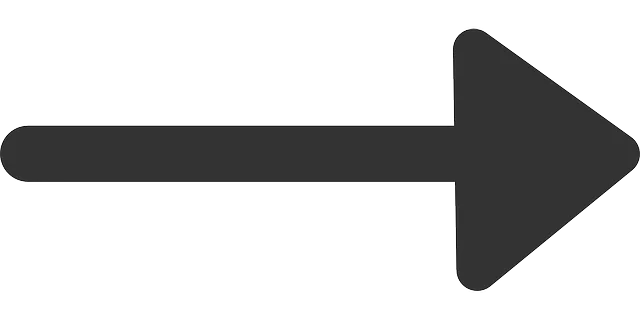Directional Boring Toledo (HDD) is a trenchless technology revolutionizing urban construction by drilling horizontally beneath surfaces, minimizing disruption to roads and sidewalks. This method offers reduced project timelines, lower costs, and environmental benefits over traditional trenching, making it ideal for installing pipes, cables, and fiber optics in both urban and suburban areas. HDD is a game-changer in infrastructure development, providing sustainable and efficient solutions.
In today’s digital era, Directional Boring and Trenchless Technology are revolutionizing underground infrastructure development in cities like Toledo. This modern approach offers a seamless alternative to traditional trenching, minimizing disruptions on the surface while maximizing efficiency and safety. Understanding Horizontal Directional Drilling (HDD) provides insights into why it’s becoming a game-changer for construction projects, offering advantages over conventional methods. Explore these innovative solutions in this comprehensive guide, comparing Directional Boring to traditional trenching.
- Understanding Directional Boring: A Modern Approach
- How Horizontal Directional Drilling Works
- Advantages of Trenchless Technology
- Comparison: Traditional Trenching vs. Directional Boring Solutions
Understanding Directional Boring: A Modern Approach
Directional boring, also known as horizontal directional drilling (HDD), is a modern approach to digging and trenching that has revolutionized the construction industry. Unlike traditional trenching methods, which require large equipment and deep excavation, directional boring allows for precise, controlled drilling in a horizontal plane. This innovative technique bores beneath the surface, creating minimal disruption above ground level. It’s particularly useful in urban areas where space is limited and disrupting sidewalks or roads is a significant concern.
In Toledo and beyond, the adoption of horizontal directional drilling has been driven by its numerous advantages. Trenchless technology, as it’s often called, can reduce project timelines, lower costs, and minimize environmental impact. It also allows for the installation of utilities like pipes, cables, and fiber optics without the need for traditional trenches, making it a sustainable choice for modern infrastructure development.
How Horizontal Directional Drilling Works
Horizontal Directional Drilling (HDD) is a revolutionary trenchless technology that allows for the installation of pipes, cables, and other utilities underground without traditional trenching methods. This innovative process involves drilling horizontally through the ground at a predetermined angle, creating a path for the desired infrastructure. The technique utilizes advanced machinery and fluid pressure to navigate beneath the surface, ensuring minimal disruption to surrounding areas.
In HDD, a drill string is inserted into the ground, guided by real-time surveillance and controlled from the surface. As the drill advances, it creates a bore hole that follows the desired route. Once the target location is reached, various tools can be deployed through the bore hole to install or repair underground utilities without the need for extensive excavation. This method offers numerous advantages over traditional trenching, including reduced environmental impact, faster project completion times, and lower overall costs.
Advantages of Trenchless Technology
The adoption of Trenchless Technology in construction projects, including Directional Boring Toledo and Horizontal Directional Drilling, offers several advantages over traditional trenching methods. One of the primary benefits is reduced environmental impact. Traditional trenching involves extensive excavation, which can disrupt landscapes, disturb ecosystems, and leave visible scars on the terrain. Trenchless techniques, however, allow for the installation of pipes and infrastructure beneath the surface, minimizing site disturbances and preserving natural habitats.
Moreover, Trenchless Technology enhances project efficiency and safety. By eliminating the need for large-scale excavation, construction teams can complete projects faster, reducing time and labor costs. It also significantly lowers the risk of accidents and worker exposure to hazardous conditions often associated with traditional trenching, such as narrow spaces and unstable soil. This shift towards trenchless methods is a game-changer in the industry, offering more sustainable, efficient, and safer alternatives for infrastructure development.
Comparison: Traditional Trenching vs. Directional Boring Solutions
In the realm of infrastructure development and maintenance, traditional trenching and directional boring represent two distinct approaches to excavating and laying underground utilities. Traditional trenching involves the use of heavy machinery to dig deep and wide trenches, often requiring significant land clearance and causing substantial disruption to surrounding areas. This method is suitable for straightforward projects but can be invasive and inefficient in complex urban settings.
On the other hand, Horizontal Directional Drilling (HDD) or directional boring offers a more advanced and trenchless technology solution. HDD employs specialized equipment to create horizontal bores beneath the surface, enabling the installation of pipelines, cables, or utilities without the need for extensive trenching. This method minimizes ground disturbance, making it ideal for urban areas, narrow rights-of-way, and environmentally sensitive sites. Directional boring in Toledo, for instance, has revolutionized underground utility installations, offering a more efficient, cost-effective, and environmentally friendly alternative to traditional trenching methods.


